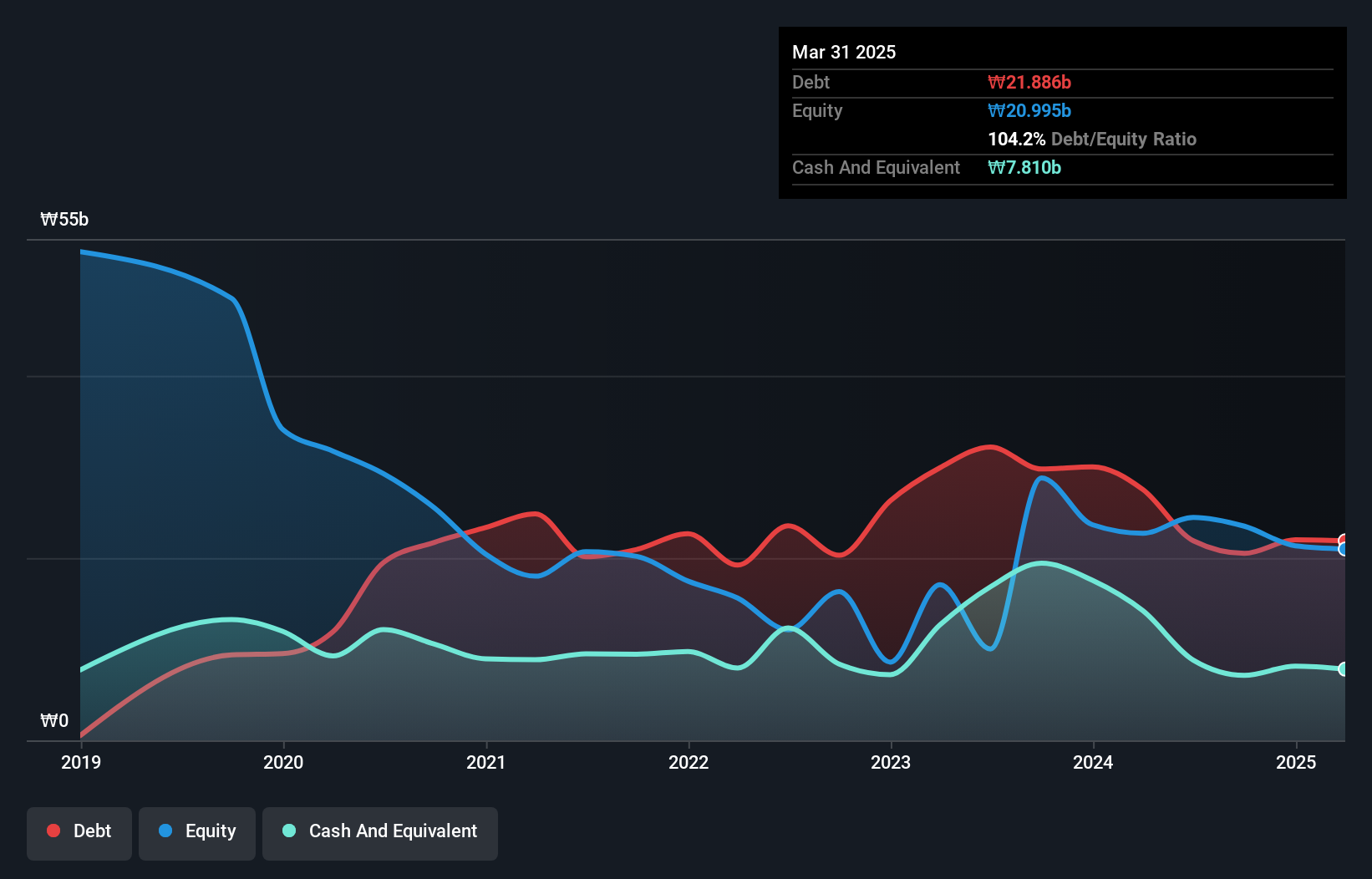- South Korea
- /
- Personal Products
- /
- KOSDAQ:A227610
Outin Futures (KOSDAQ:227610) Is Making Moderate Use Of Debt
David Iben put it well when he said, 'Volatility is not a risk we care about. What we care about is avoiding the permanent loss of capital.' So it seems the smart money knows that debt - which is usually involved in bankruptcies - is a very important factor, when you assess how risky a company is. As with many other companies Outin Futures Co., Ltd (KOSDAQ:227610) makes use of debt. But should shareholders be worried about its use of debt?
When Is Debt Dangerous?
Generally speaking, debt only becomes a real problem when a company can't easily pay it off, either by raising capital or with its own cash flow. In the worst case scenario, a company can go bankrupt if it cannot pay its creditors. However, a more common (but still painful) scenario is that it has to raise new equity capital at a low price, thus permanently diluting shareholders. Of course, the upside of debt is that it often represents cheap capital, especially when it replaces dilution in a company with the ability to reinvest at high rates of return. When we think about a company's use of debt, we first look at cash and debt together.
How Much Debt Does Outin Futures Carry?
As you can see below, Outin Futures had ₩21.9b of debt at March 2025, down from ₩27.5b a year prior. However, it does have ₩7.81b in cash offsetting this, leading to net debt of about ₩14.1b.

A Look At Outin Futures' Liabilities
We can see from the most recent balance sheet that Outin Futures had liabilities of ₩25.3b falling due within a year, and liabilities of ₩7.95b due beyond that. On the other hand, it had cash of ₩7.81b and ₩9.88b worth of receivables due within a year. So it has liabilities totalling ₩15.6b more than its cash and near-term receivables, combined.
Outin Futures has a market capitalization of ₩35.3b, so it could very likely raise cash to ameliorate its balance sheet, if the need arose. But it's clear that we should definitely closely examine whether it can manage its debt without dilution. There's no doubt that we learn most about debt from the balance sheet. But it is Outin Futures's earnings that will influence how the balance sheet holds up in the future. So if you're keen to discover more about its earnings, it might be worth checking out this graph of its long term earnings trend.
View our latest analysis for Outin Futures
In the last year Outin Futures wasn't profitable at an EBIT level, but managed to grow its revenue by 20%, to ₩38b. We usually like to see faster growth from unprofitable companies, but each to their own.
Caveat Emptor
Over the last twelve months Outin Futures produced an earnings before interest and tax (EBIT) loss. To be specific the EBIT loss came in at ₩1.8b. When we look at that and recall the liabilities on its balance sheet, relative to cash, it seems unwise to us for the company to have any debt. So we think its balance sheet is a little strained, though not beyond repair. However, it doesn't help that it burned through ₩2.6b of cash over the last year. So in short it's a really risky stock. When analysing debt levels, the balance sheet is the obvious place to start. However, not all investment risk resides within the balance sheet - far from it. For example, we've discovered 1 warning sign for Outin Futures that you should be aware of before investing here.
When all is said and done, sometimes its easier to focus on companies that don't even need debt. Readers can access a list of growth stocks with zero net debt 100% free, right now.
New: AI Stock Screener & Alerts
Our new AI Stock Screener scans the market every day to uncover opportunities.
• Dividend Powerhouses (3%+ Yield)
• Undervalued Small Caps with Insider Buying
• High growth Tech and AI Companies
Or build your own from over 50 metrics.
Have feedback on this article? Concerned about the content? Get in touch with us directly. Alternatively, email editorial-team (at) simplywallst.com.
This article by Simply Wall St is general in nature. We provide commentary based on historical data and analyst forecasts only using an unbiased methodology and our articles are not intended to be financial advice. It does not constitute a recommendation to buy or sell any stock, and does not take account of your objectives, or your financial situation. We aim to bring you long-term focused analysis driven by fundamental data. Note that our analysis may not factor in the latest price-sensitive company announcements or qualitative material. Simply Wall St has no position in any stocks mentioned.
About KOSDAQ:A227610
Outin Futures
Operates as a design and cosmetic development company worldwide.
Adequate balance sheet and slightly overvalued.
Market Insights
Community Narratives



